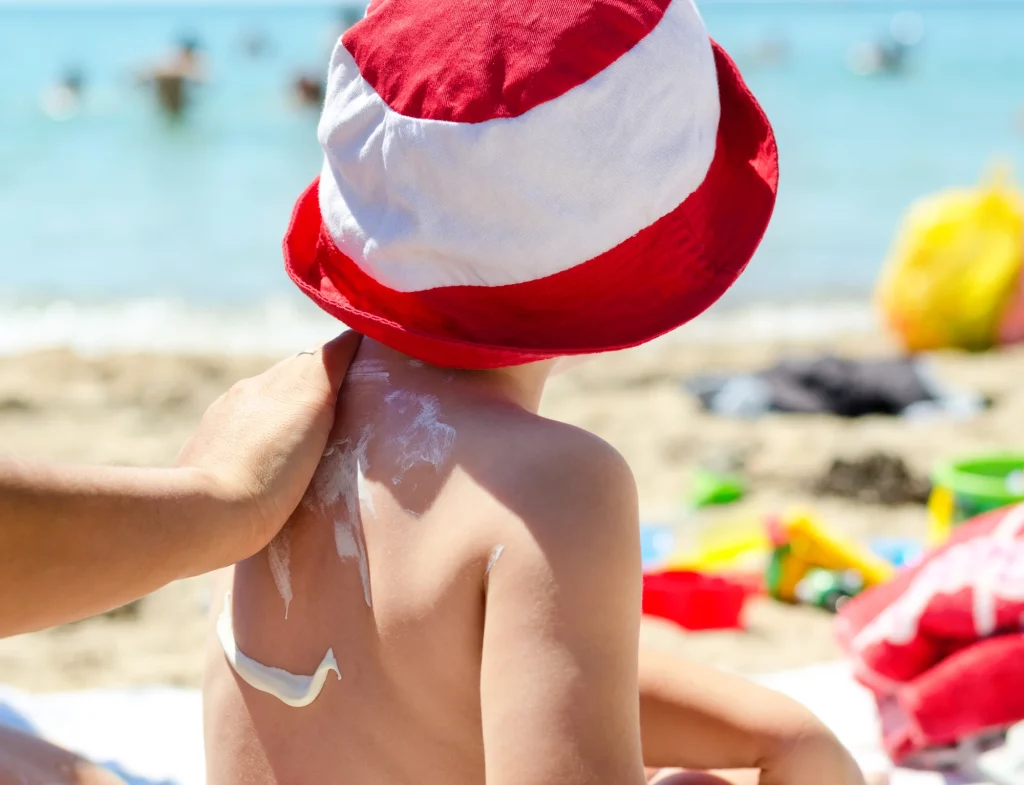Physical Address
304 North Cardinal St.
Dorchester Center, MA 02124
Physical Address
304 North Cardinal St.
Dorchester Center, MA 02124
ADVERTISEMENT
ADVERTISEMENT

Being a kid means that you’ll constantly be getting into trouble: exploring the world comes with its downsides too and sooner or later, you will be covered with cuts, scraps, and bruises. You will also probably experience sunburn at some point in your life, much to the dismay of those who care for you. Parents, on the other hand, can’t protect their children from everything, no matter how hard they try, but it doesn’t mean that they can’t do anything at all. If you’ll be spending a lot of time in the sun with your kids, UV protection is very important. Here’s how you can protect them from harmful UV lights.
You will notice that a lot of skincare products have a sun protection factor – SPF. Sunscreens with high SPF are more likely to protect your child’s sensitive skin from harmful sun rays and prevent sunburn in the harsh sun. Seeing as SPF 15 offers about 2 hours of protection and blocks approximately 93% of UVB rays, it’s safe to say that this is a good starting point for kids. Of course, the higher the number, the better the protection, so SPF 30 will block about 97%, whereas SPF 50+ blocks 98% of UVB lights. The difference in percentage might seem minor to you, but don’t forget that your child’s skin is sensitive, and you don’t want to take any chances.
Sunscreens are great for protecting children’s sensitive skin, but you shouldn’t forget about their heads and eyes. Adults know that hats, caps, and bandanas are important as well as stylish, but kids might find these to be a nuisance and try to take them off. Try to find good broadbrim baby hats because these will protect your child’s head, face, as well as their shoulders. Most importantly, use hats with straps so that kids don’t lose them, even after running around the beach and playing with their friends.
ADVERTISEMENT
There are many different types of sunscreens, and parents can often get confused and not be sure what to use. Don’t worry, as long as you use one with SPF 15+, your child will be well protected. When it comes to whether you should use a lotion, a gel, cream, spray, or stick, it’s entirely up to you and what you find to be the most convenient. As long as your child isn’t allergic to any of the ingredients and agrees to wear the sunscreen, you’re good to do. You can use creams and lotions on babies because you can apply them easily, but with active toddlers and preschoolers, sprays might be the best choice.
Finding the best sunscreen is difficult because just when you’re sure you’ve found the one, it can turn out that your child is allergic to sunscreen or one of the ingredients in it. This is why you should test the product before you head out to one of the beaches because the absolute worst time to discover that your child has an allergic reaction to sunscreen is in the middle of a busy beach. If you don’t want to risk experiencing this, we suggest you apply a small amount of sunscreen to the inside of your child’s upper arm 24 hours before your beach trip and wait to see if there’s any sign of redness or rash.
The good news is those good sunscreens offer great protection for hours at a time, but the bad news is that you have to reapply them often, especially if your child goes swimming. Even if they don’t swim, kids will get sweaty from the heat or from running around, and this means that sunscreen will be washed from their bodies. Water-resistant products are a good idea because they last longer, but even then you should reapply them every 40 or 80 minutes. Otherwise, it’s a good idea to check the label and see how long you can wait before you need to reapply sunscreen.
It’s all fun and games in the sun until someone ends up with a severe case of sunburn. It might not seem like a big deal at the time, but just one childhood blistering sunburn can double your child’s lifetime risk of skin cancer. Melanoma is not to be taken lightly, so you should take precautions and make sure your child’s sensitive skin is protected from the harmful UV rays at all times. You might not be able to protect them from everything, but you can keep their skin safe from the sun, and this will make a huge difference in the future.
ADVERTISEMENT